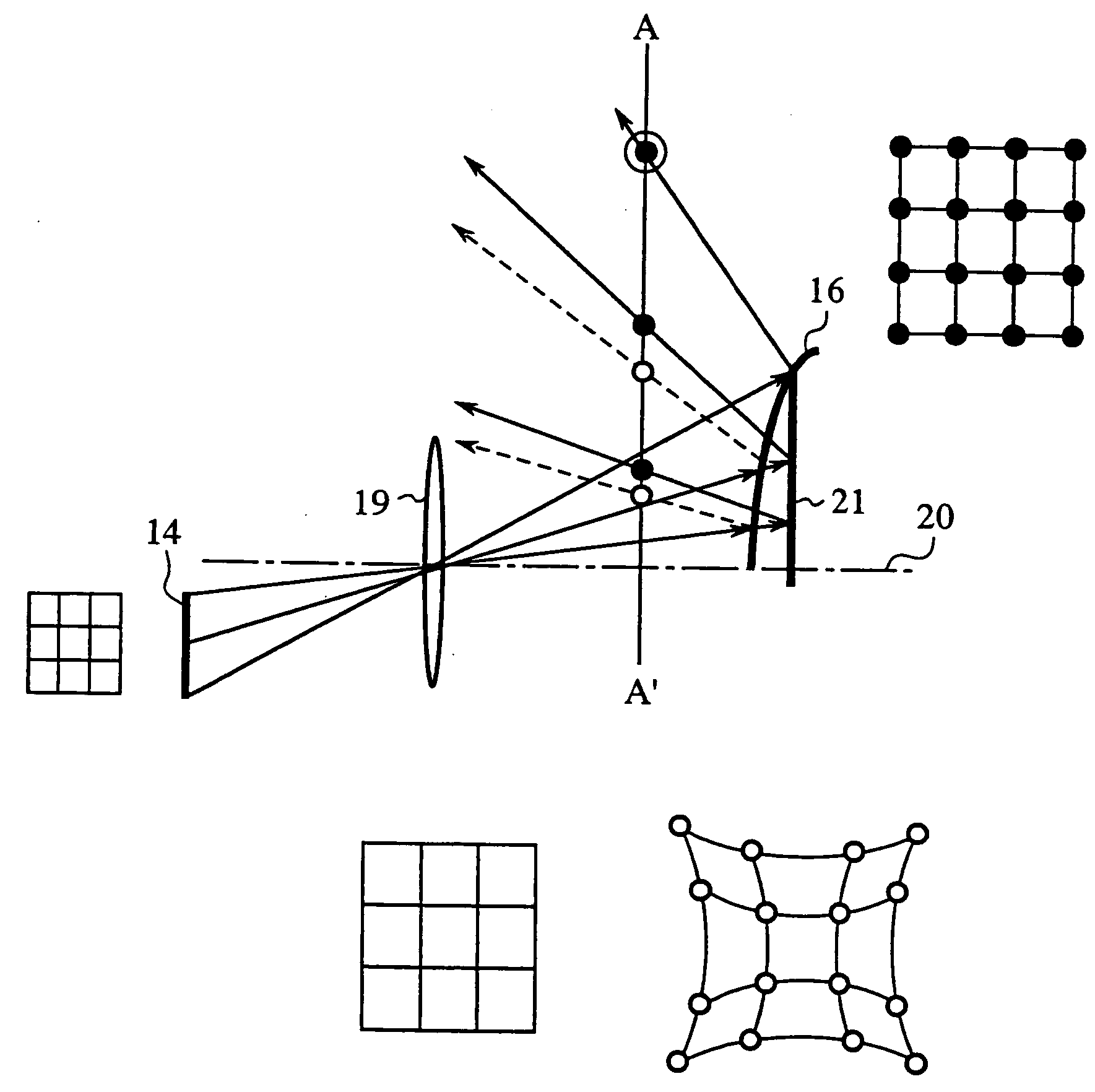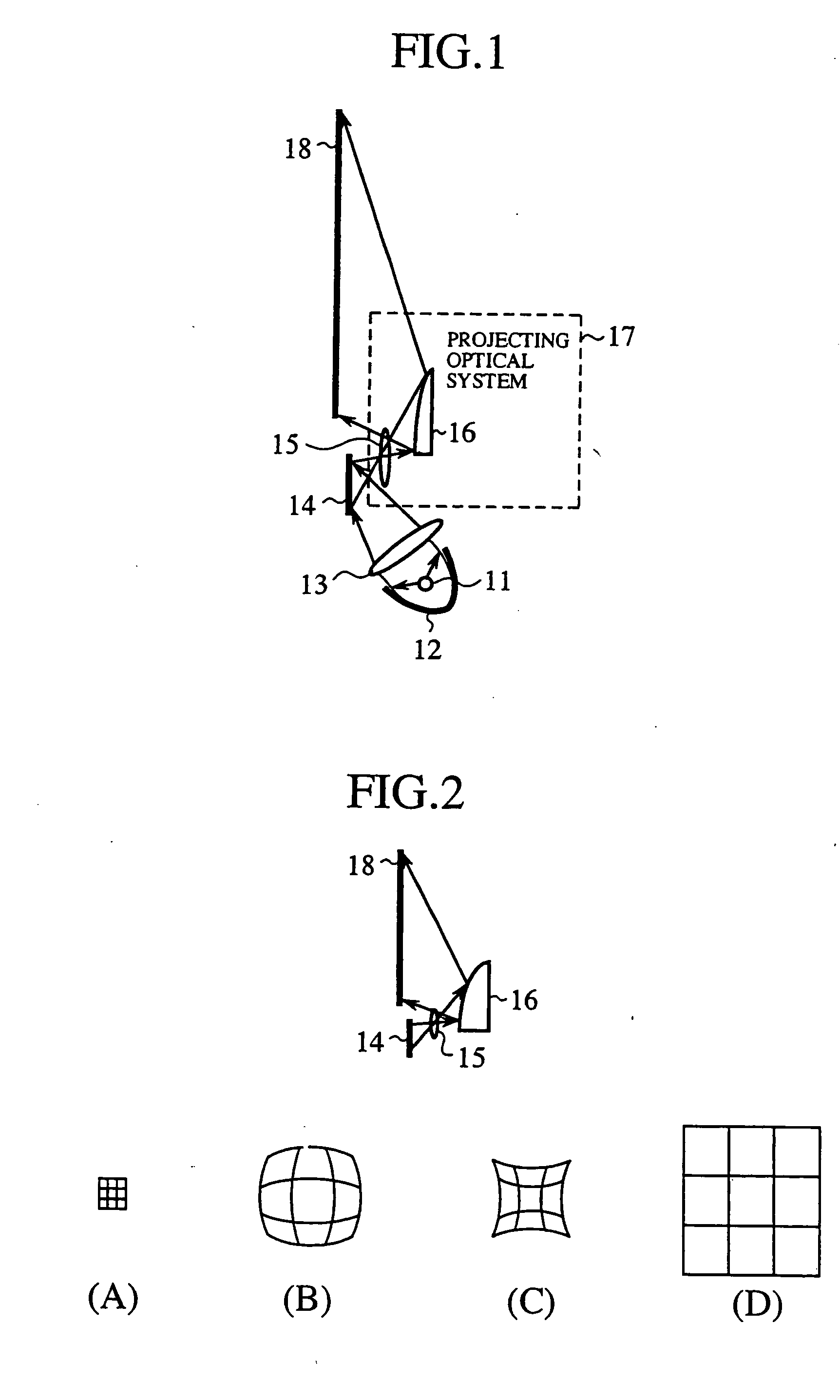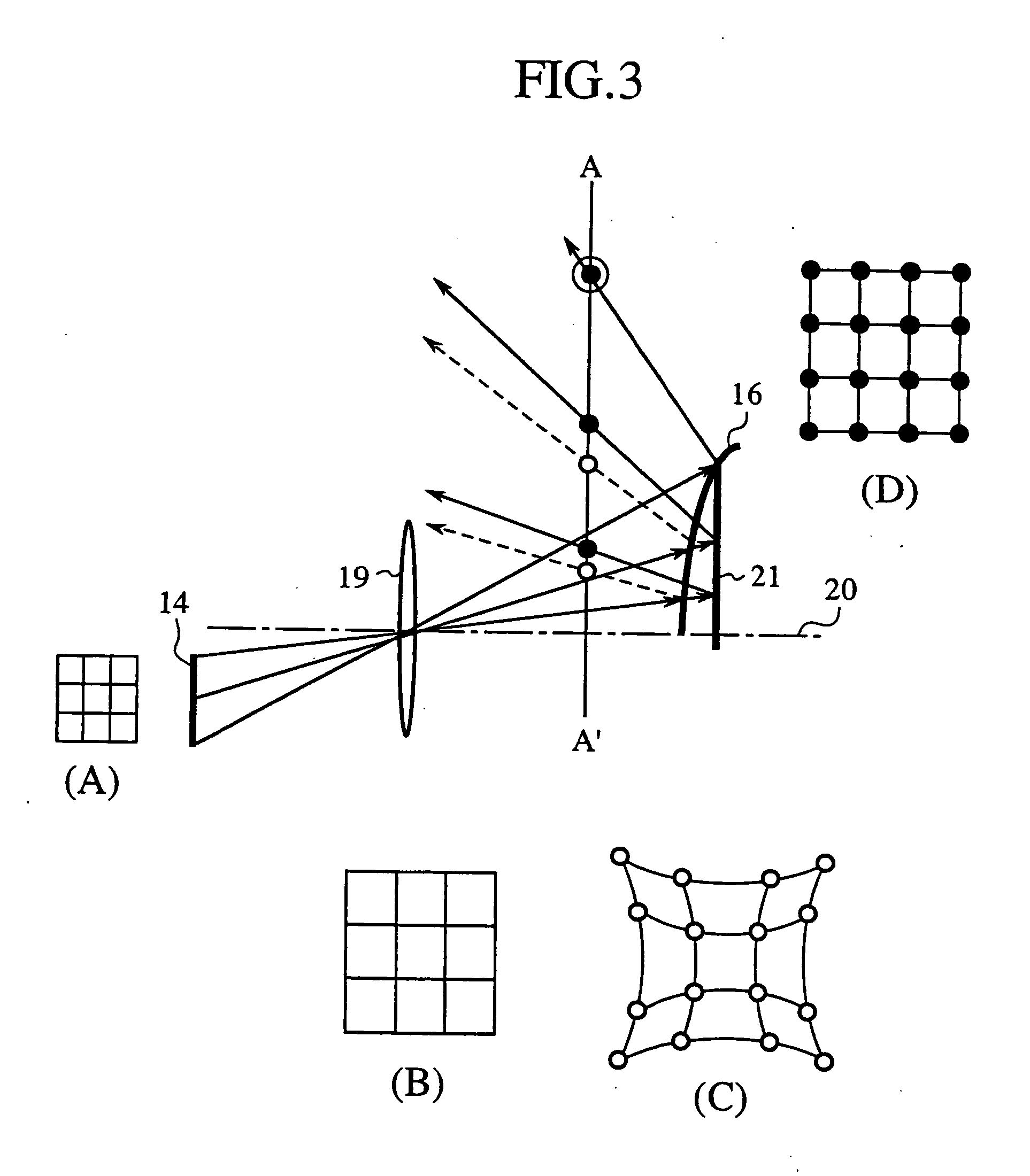Image display device and adjustment for alignment
a technology which is applied in the field of image display device and adjustment for alignment, can solve the problems of further reduction and limit of the depth dimension of the device, and achieve the effect of reducing the depth dimension
- Summary
- Abstract
- Description
- Claims
- Application Information
AI Technical Summary
Benefits of technology
Problems solved by technology
Method used
Image
Examples
embodiment 1
[0193]FIG. 1 schematically illustrates the configuration of an image display device according to a first embodiment (Embodiment 1) of the present invention. Reference numeral 11 denotes a luminous element that emits light (illumination light); 12 denotes a parabolic reflector for reflecting the light from the luminous element 11 mostly into parallel rays of light; and 13 denotes a condenser lens for gathering the rays of light reflected by the parabolic reflector 12. The luminous element 11, the parabolic reflector 12 and the condenser lens 13 constitute a illumination light source system (sending means, illumination light source part).
[0194] Reference numeral 14 denotes a micro-mirror device (sending means, a reflecting image information imparting part, digital micro-mirror device (DMD), a registered trademark of Texas Instruments Incorporated (TI)) that is a reflecting spatial light modulator. The micro-mirror device 14 spatially intensity-modulates the light gathered by the cond...
embodiment 2
[0218] While in Embodiment 1 the projecting optical system 17 is comprised of the refracting optical lens 15 of barrel distortion and the convex mirror 16 of pincushion distortion, this embodiment (Embodiment 2) forms the projecting optical system by a Fresnel mirror capable of magnifying an image with a short projection distance as is the case with the convex mirror and having no distortion.
[0219]FIG. 5 is a diagram schematically depicting the configuration of an image display device according to Embodiment 2. Reference numeral 23 denotes an aplanatic refracting lens (a refracting optical part); 24 denotes a Fresnel mirror (a reflecting part) for reflecting light from the refracting optical lens 23 onto the screen 18; and 25 denotes a projecting optical system (projecting optical means) composed of the refracting optical lens 23 and the Fresnel mirror 24. As is the case with the convex mirror 16, the reflecting surface of the Fresnel mirror 24 has negative power. For brevity sake,...
embodiment 3
[0224] In this embodiment the projecting optical system is made up of an optical element that has a convex projecting surface on the side thereof opposite the light receiving surface and a refracting optical lens.
[0225]FIG. 8 is a diagram schematically illustrating the configuration of an image display device according to a third embodiment (Embodiment 3) of the present invention. Reference numeral 28 denotes a refracting optical lens (a refracting optical part); 29 denotes an optical element (a reflecting part) formed of two optical materials of different dispersion characteristics; and 30 denotes a projecting optical system (projecting optical means) made up of the refracting optical lens 28 and the optical element 29. For the brevity sake, no illumination light source system is shown.
[0226]FIG. 9 depicts the optical element in enlarged dimension. Reference numerals 31 and 33 denote low dispersion glass (low dispersion medium) and high dispersion glass (high dispersion medium), ...
PUM
 Login to View More
Login to View More Abstract
Description
Claims
Application Information
 Login to View More
Login to View More - R&D
- Intellectual Property
- Life Sciences
- Materials
- Tech Scout
- Unparalleled Data Quality
- Higher Quality Content
- 60% Fewer Hallucinations
Browse by: Latest US Patents, China's latest patents, Technical Efficacy Thesaurus, Application Domain, Technology Topic, Popular Technical Reports.
© 2025 PatSnap. All rights reserved.Legal|Privacy policy|Modern Slavery Act Transparency Statement|Sitemap|About US| Contact US: help@patsnap.com



